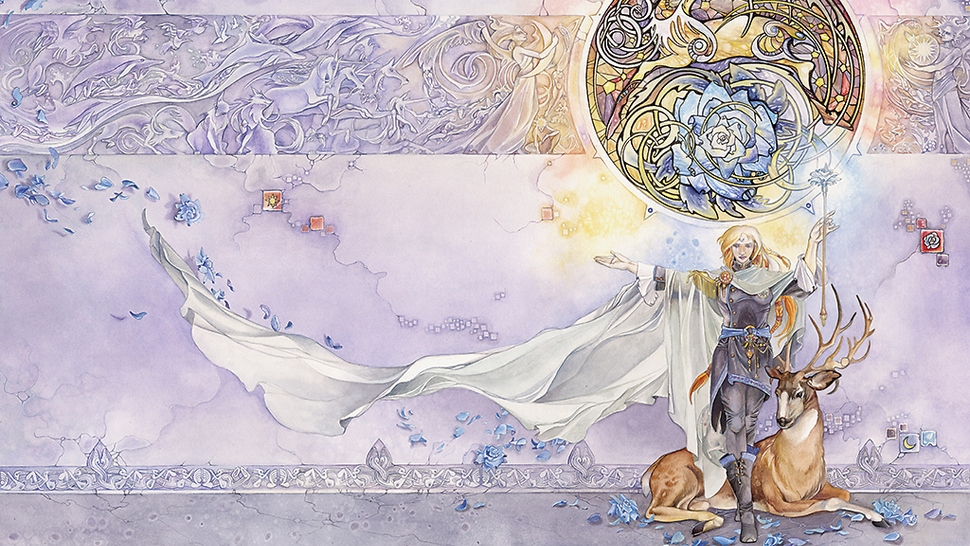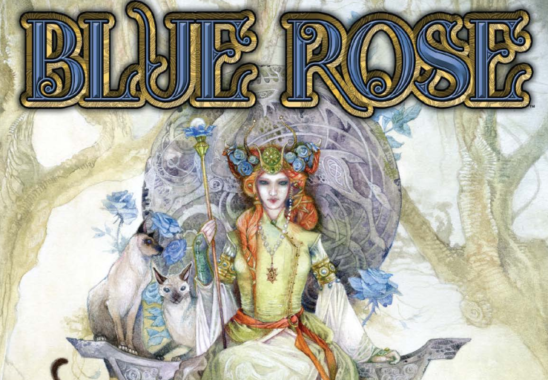For gamers who want a different type of RPG, look no further than Blue Rose.
What’s Blue Rose?

Blue Rose is a romantic fantasy game that famously does not assume that the player characters will be straight or cis gender. In fact, in Blue Rose, it’s often the opposite. When the game first released, these aspects of the game caused controversy. But the game was still able to release a second successful edition.
Blue Rose addresses topics that not many RPGs address. And moreover, it’s a refreshing break from the focus on darkness and violence built into other RPG systems. While playing gritty, tough characters can be fun, so many RPGs deviate from “good kingdom” fantasy tropes that Blue Rose always feels like it’s breaking new ground, even when it builds on traditions created by Mercedes Lackey and Diane Duane.
The History of Blue Rose
https://tenor.com/embed.jsGreen Ronin published the first edition of Blue Rose in 2005. Jeremy Crawford, Dawn Elliot, Steve Kenson, Alejandro Melchor, and John Snead designed the game. The system used True20 rules: a set of setting-agnostic d20-derivative rules designed by Kenson. Mutants & Masterminds also used this system. The second edition of the game published in 2015 after a successful Kickstarter. This version used the Adventure Game Engine (AGE) System also used in the Dragon Age RPG published by Green Ronin.
The Setting

Those familiar with the genre know that Dungeons-&-Dragons-style fantasy is not the only way you can engage with the fantasy genre. Dungeons & Dragons is a system that many refer to as “swords and sorcery.” However, Blue Rose was designed with romantic fantasy in mind. Romantic fantasy is, as the name implies, fantasy focused around romantic topics. The game is hopeful and good where other systems are more chaotic and grim and even violent. The system is meant for stories tied more closely to themes of personal development rather than physical combat or magical heroism.
Blue Rose is set in Aldea, specifically, the Kingdom of Aldis. Aldis is a very civilized kingdom, and the conflict the players find will likely be more centered around intrigue and interpersonal relationships rather than mercenary work. Aldis values social harmony and justice, so the people who inhabit the kingdom tend towards goodness, as the gods intended. In fact, the ruler of Aldis is chosen through divine intervention, rather than a royal line of succession.
Sexuality & Gender

In Blue Rose, sexuality and gender differences are built into the setting. Because it is a romantic RPG, the core rulebook goes into more detail about gender and sexuality in Aldis. Some RPGs, including Dungeons & Dragons, now directly address gender and sexuality in their rulebooks. Blue Rose directly addresses how gender and sexuality affect society. The book addresses perceptions of characters across the LGBT spectrum.
Interestingly, in Blue Rose, characters are assumed to be bi or pansexual. There is still “coming out” in Blue Rose. Though, it isn’t looked down upon or dangerous like it can be in the real world. It is unusual for a person in Aldea to be attracted only to one gender, as gender is not often considered to be a factor in attraction. Attraction to only one gender, whether it is same sex attraction or opposite sex attraction, is met with curiosity, but not prejudice.
In regards to marriage, Aldea considers marriage to be a legal romantic union between two or more adults. In some parts of the world, it’s less usual for more than two people to marry. However, polyamory isn’t unheard of in Aldea.
The Laevvel

In Aldea, most people are male or female, but some have traits of male and female genders or neither male nor female genders. Additionally, some are born with traits of one gender, but they later decide to transition to another. Intersex and binary and non-binary trans characters are referred to as laevvel bran’maur (beyond Braniel and Maurenna, after whom men and women were created), or simply laevvel.
Laevvel characters will have varying reactions throughout Aldea, but laevvel aren’t often met with prejudice. While they are different from the majority, this isn’t a bad thing. Player characters who are laevvel have the choice to have already transitioned, be in the midst of transitioning, and to be pre-transition. Transition is an important part of a laevvel character’s personal journey. Transition can be a physical and social transformation, or anything the character feels best represents themselves. There aren’t specific rules for how a character should transition, but the game refers to several options for transitioning laevvel characters.
Blue Rose In Tabletop History

While RPGs used to imply that players could play whoever they want, more RPGs are directly addressing gender and sexuality in their rulebooks. Including direct references to these topics lets players know that they are welcome at the table and that there is a place for them in this fantasy world. Moreover, by creating a hopeful, bright world yearning for good, players can explore what it’s like to be unabashedly yourself in a utopia.
Featured image credits: Green Ronin, Fiona L.F. Kelly/Geek Gals

